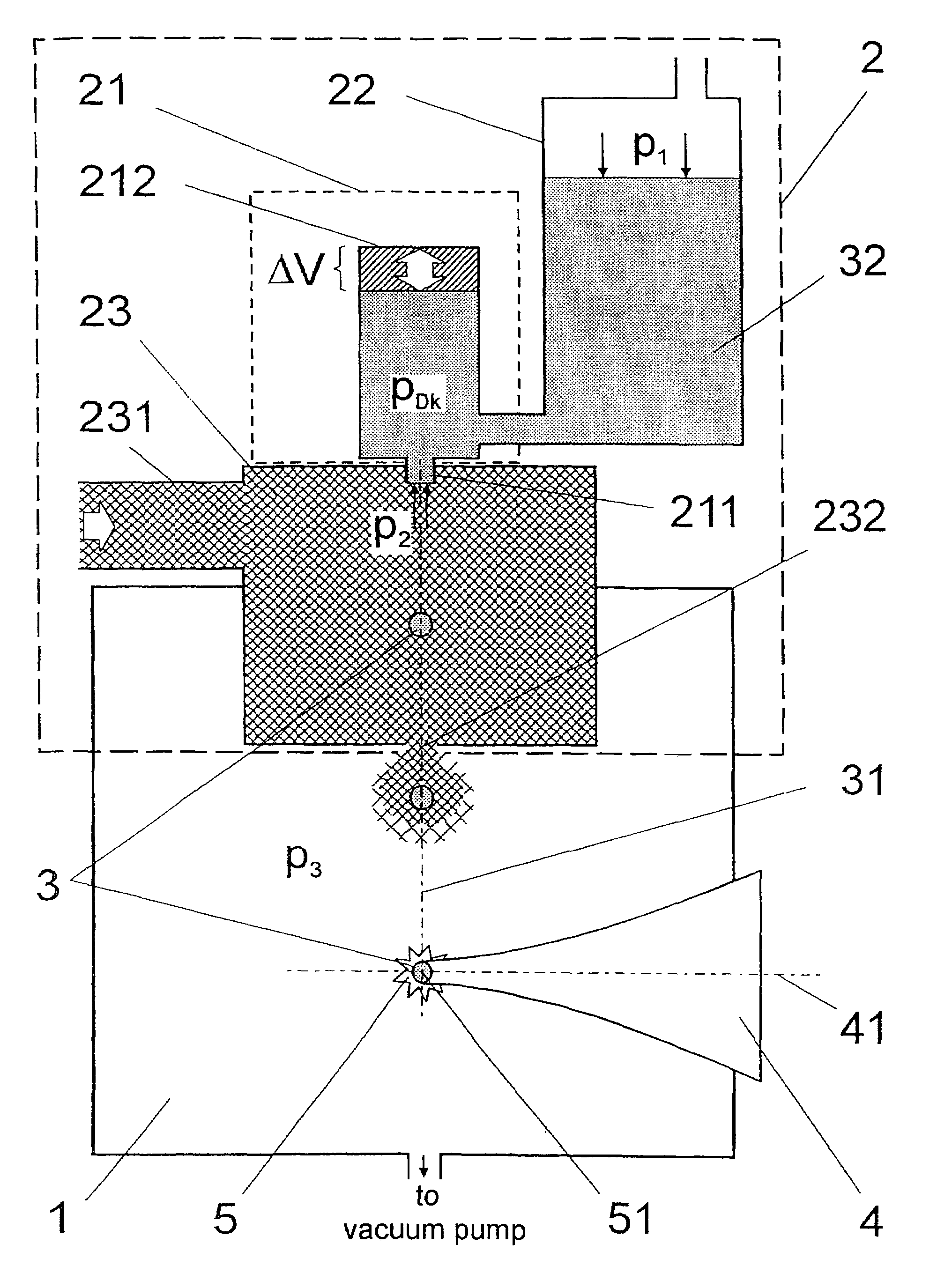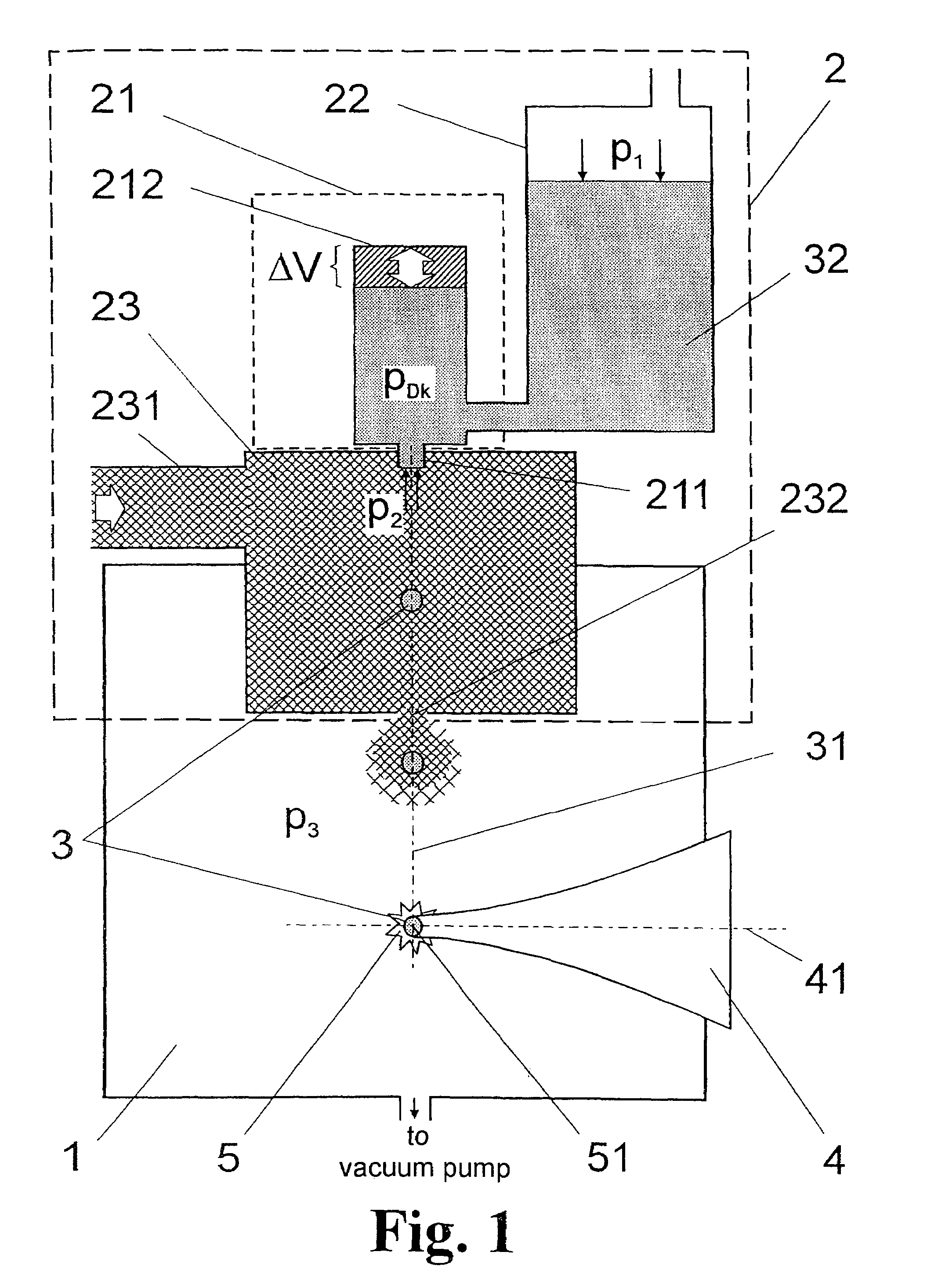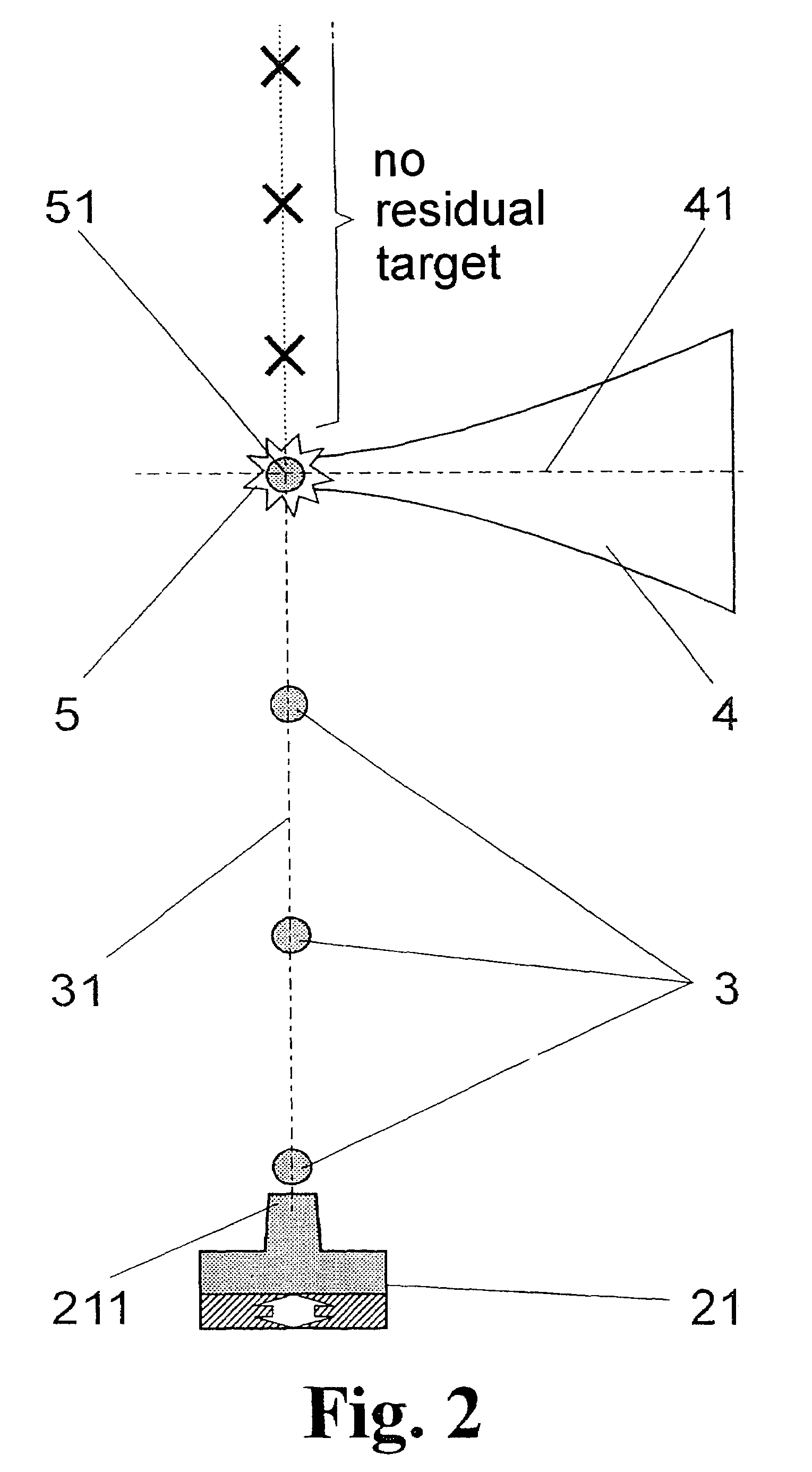Arrangement and method for metering target material for the generation of short-wavelength electromagnetic radiation
a technology of electromagnetic radiation and target material, which is applied in the direction of x-ray tube electrodes, x-ray tubes with very high current, radiation therapy, etc., to achieve the effect of minimizing the gas burden in the interaction chamber and generating debris
- Summary
- Abstract
- Description
- Claims
- Application Information
AI Technical Summary
Benefits of technology
Problems solved by technology
Method used
Image
Examples
Embodiment Construction
[0049]FIG. 1 is a schematic view showing a portion of a radiation source for generating short-wavelength electromagnetic radiation based on a plasma induced by the input of energy. The drawing shows an interaction chamber 1 in which individual targets 3 are prepared along a target path 31 by a target generator 2. The target path 31 is intersected by the axis 41 of an energy beam 4 at an interaction point 51, wherein a plasma 5 emitting the desired radiation is generated by the energy beam 4 impinging on a respective individual target 3.
[0050]The target generator 2 comprises an injection device 21 with a nozzle 211 and a nozzle chamber 212 which is able to cause a temporary change in volume ΔV and, therefore, a change in pressure of the nozzle chamber pressure PDk. The principle is similar to that of conventional inkjet nozzles and will be described in more detail (FIG. 3 and FIG. 4) in the following. Further, the injection device 21 of the nozzle chamber 212 is connected to a reserv...
PUM
 Login to View More
Login to View More Abstract
Description
Claims
Application Information
 Login to View More
Login to View More - R&D
- Intellectual Property
- Life Sciences
- Materials
- Tech Scout
- Unparalleled Data Quality
- Higher Quality Content
- 60% Fewer Hallucinations
Browse by: Latest US Patents, China's latest patents, Technical Efficacy Thesaurus, Application Domain, Technology Topic, Popular Technical Reports.
© 2025 PatSnap. All rights reserved.Legal|Privacy policy|Modern Slavery Act Transparency Statement|Sitemap|About US| Contact US: help@patsnap.com



